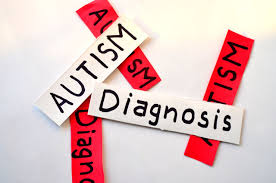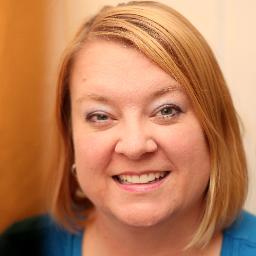What Exactly Are Autism Spectrum Disorders?
Oct 10, 2015, by Dawn GibsonAutism , Autism Spectrum Disorders
 Hollywood would have us believe that those individuals with autism are savants (think of Dustin Hoffman in Rain Man) or are completely in their own world and can't be reached. Autism Spectrum Disorders (ASD) share certain characteristics, but each diagnosis is also unique, unique being the key word. Within autism there is a wide spectrum of skills and abilities. Regardless of what type of Autism Spectrum Disorder a child has, one can be fairly certain that the child will be affected behaviorally, socially, academically, and emotionally.
Hollywood would have us believe that those individuals with autism are savants (think of Dustin Hoffman in Rain Man) or are completely in their own world and can't be reached. Autism Spectrum Disorders (ASD) share certain characteristics, but each diagnosis is also unique, unique being the key word. Within autism there is a wide spectrum of skills and abilities. Regardless of what type of Autism Spectrum Disorder a child has, one can be fairly certain that the child will be affected behaviorally, socially, academically, and emotionally.
First, there is Asperger's Syndrome (The latest edition of the Diagnostic and Statistical Manual of Mental Disorders (DSM-V) no longer includes Asperger’s syndrome, and has instead incorporated it into the diagnosis of ASD, and is sometimes referred to as "mild" autism). Asperger's has gotten a lot of press lately, some of which is true, some which isn't, and some is a mixture of the two. Those diagnosed with Asperger’s Disorder cannot have a “clinically significant” cognitive delay, and most possess average to above-average intelligence. Individuals with Asperger's usually have good "surface" language skills. They reach the language milestones at a fairly typical rate. That would be words by age two and phrases by age three. As they get older and communicate, it becomes evident that there is an awkwardness when they talk. They do not understand the natural give and take in conversation. Often times, their conversations are one sided and many times about only the thing(s) that they are interested in. The listener might become bored and attempt to change the subject, and yet the Asperger's individual never notices this. This type of behavior goes along with their inability to accurately read people. These individuals many times will have poor eye contact, a rigid voice tone, and not understand empathy or be sensitive to others feelings (of course this can, and often does vary from person to person). They might appear awkward and seem to have poor coordination. The general public has often described Asperger's individuals as "quirky".
Another type of ASD, is Autistic Disorder. The DSM-V describes Autistic Disorder as "abnormal or impaired development in social interaction and communication, and a markedly restricted repertoire of activity and interest." (Autism Society, Diagnostic Classification) There is no medical test that a child can take and instantly be diagnosed with Autistic Disorder, although parents will usually observe that their child, at a young age, is not developing like their more typical peers. In order to be diagnosed a child is observed to see if he/she meets a set criteria of impairments in socialization, communication, and activity and interest, as I mentioned earlier. Autism is a spectrum disorder. This means that an individual can fall anywhere on the spectrum, some cases being more severe than others. Some children with autism that receive early intervention and intense training in language and communication, are able to function quite well, even with the impairments. These children are on one side of the spectrum. On the opposite end of the spectrum are children that are in their own world, and who do not communicate at all. Most children with autism will fall somewhere in between these two extremes.
Pervasive Developmental Disorder-Not Otherwise Specified, is fairly self explanatory. This Disorder is very similar to Autistic Disorder, in that they both effect a child's ability to socialize and communicate. He or she also tends to have remarkable fixations on things that they like. The difference has to do with the age of the child at the onset of PDD-NOS. With autism, the diagnosis occurs when the child is fairly young. With PDD-NOS, the child is older. If all the other subtypes of Pervasive Developmental Disorders are ruled out, then a child might be diagnosed with PDD-NOS. Regardless of diagnosis, a child with PDD-NOS or autism should both be treated in a similar manner.
Another less heard of, subtype of Autism Spectrum Disorders is Rett's Disorder. This particular diagnosis is almost exclusively in females. With Rett's a child has normal prenatal development, and normal development through the first five months of life. The infant also has normal head circumference. At some point the child loses the ability/skill he/she had to do purposeful work with their hands. He/She begins a characteristics hand-wringing type motion. Within a few years after the onset of this hand-wringing, the child will begin to lose their desire for socialization. Both their receptive and expressive language skills also diminish. According to the Mayo Clinic, "Most babies with Rett syndrome seem to develop normally at first, but after about 6 months of age, they lose skills they previously had — such as the ability to crawl, walk, communicate or use their hands."
Finally, the last subtype of PDD that I will talk about is, Childhood Disintegrative Disorder. In this particular disorder a child would have normal developmental for at least the first two years of their life. After birth he/she had age appropriate verbal and nonverbal communication skills as well as age appropriate social skills. He/She also had age appropriate play and adaptive skills. A child might have CDD if there has been a clinically significant loss of acquired skills, before the age of ten years, in at least two of these areas: receptive or expressive language, social skills, play, motor skills, or bowel or bladder control. At this time there are also significant impairments in socialization, communication, and repetitive activities. In order to have this diagnosis all other PDD diagnoses must be ruled out, as well as schizophrenia.




